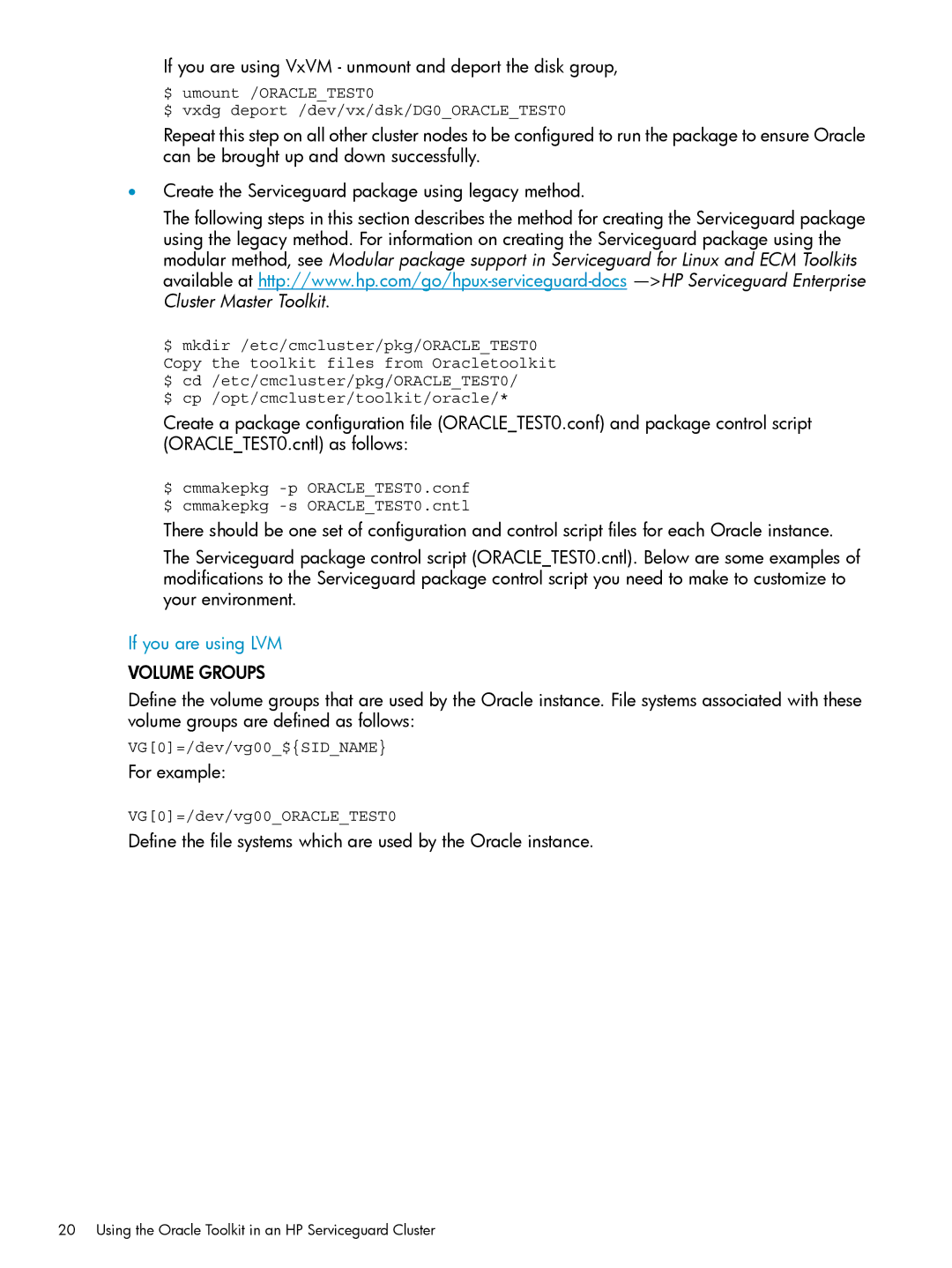If you are using VxVM - unmount and deport the disk group,
$ umount /ORACLE_TEST0
$ vxdg deport /dev/vx/dsk/DG0_ORACLE_TEST0
Repeat this step on all other cluster nodes to be configured to run the package to ensure Oracle can be brought up and down successfully.
•Create the Serviceguard package using legacy method.
The following steps in this section describes the method for creating the Serviceguard package using the legacy method. For information on creating the Serviceguard package using the modular method, see Modular package support in Serviceguard for Linux and ECM Toolkits available at
$ mkdir /etc/cmcluster/pkg/ORACLE_TEST0 Copy the toolkit files from Oracletoolkit $ cd /etc/cmcluster/pkg/ORACLE_TEST0/
$ cp /opt/cmcluster/toolkit/oracle/*
Create a package configuration file (ORACLE_TEST0.conf) and package control script (ORACLE_TEST0.cntl) as follows:
$ cmmakepkg
There should be one set of configuration and control script files for each Oracle instance.
The Serviceguard package control script (ORACLE_TEST0.cntl). Below are some examples of modifications to the Serviceguard package control script you need to make to customize to your environment.
If you are using LVM
VOLUME GROUPS
Define the volume groups that are used by the Oracle instance. File systems associated with these volume groups are defined as follows:
VG[0]=/dev/vg00_${SID_NAME}
For example:
VG[0]=/dev/vg00_ORACLE_TEST0
Define the file systems which are used by the Oracle instance.
